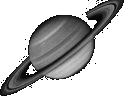
Blackholes2 Forum Message | |
| Forums: |
Atm ·
Astrophotography ·
Blackholes ·
Blackholes2 ·
CCD ·
Celestron ·
Domes ·
Education
Eyepieces · Meade · Misc. · God and Science · SETI · Software · UFO · XEphem |

 |
|
 |
||||
|
|
||||||
Be the first pioneers to continue the Astronomy Discussions at our new Astronomy meeting place... The Space and Astronomy Agora |
| Re: A Few Black Hole Inquiries
Forum List | Follow Ups | Post Message | Back to Thread Topics | In Response To Posted by Thed/">Thed on June 3, 1998 03:13:40 UTC |
|
: -How long does it take for a black hole to form (up to about critical radius)? Faster than you might realise, in under 10 seconds. What happens is that a large star that is fusing hydrogen runs of hydrogen in its core and so starts fusing helium. As time progresses heavier and heavier elements are burned in the core until Iron is formed. It takes more energy to fuse Iron than is released so the Stars core temperature starts dropping. This causes the balance between Gravity and heat (thermodynamic equilibrium) to be upset and Gravity takes over. The Star starts collapsing under gravity and the stars atmosphere heats up, fast. All the stars material starts fusing at the same time (all of it) which creates a lot of neutrinos. In the core the atoms are pressed closer and closer until the electrons clouds are touching each other. Normally electrostatic repulsion would halt the collapse but in this case Gravity is stronger so the electrons are stripped off. At this point we have a stellar core made up of atomic nuclei touching each other and free electrons. When the electrons find a proton they interact and become neutrons. Again, the collapse would normally stop there as the strong nuclear force would hold up the ball of neutrons against Gravity. (This is how a neutron star is formed using a simple explanation). In this case Gravity is stronger and the neutrons are stripped down and become something else. At this point a black hole is formed. I say something else as Physics breaks down at this point. This all goes on while the star collapses. When the Black hole forms the collapsing atmosphere bounces off it, so to speak. All the neutrinos being produced are now moving away from the hole and cause the stars atmosphere to be shredded. This is what we see as a Supernovae. Though the star might last millions or a few billions of years the supernovae event only lasts a few seconds. Supernovae mumble, the one in the Magellanic Cloud ten or so years ago is being studied to see if a massive compact object was left behind. : -How long do they last? Practically forever. Hawking radiation allows the hole to evaporate but it takes tens of hundreds of billions of years to happen. : -How does a Kerr black hole begin rotating? How fast? Search http://www.dejanews.com for an article from Andrew Yee entitled "Why neutron stars and white dwarfs rotate: kicks at birth, not inheritance" for a good answer. Better than I can give anyway :) Some neutron stars have been found that rotate thousandsof times a second. The Crab Pulsar is one IIRC. It is not unreasonable to expect a new black hole to be as fast or faster. : -How big do black holes get? As far as known, as big as they want. The hubble space telescope is imaging the centers of galaxies that have objects with a mass of tens of millions the mass of our sun and yet do not emit light and are so small they can not be imaged. Generally thought to be Black Holes. : -Do objects orbit black holes? It is how they where detected. If you have two stars in a binary orbit and one goes supernovae to leave a balck hole the other keeps orbiting the hole. Using newtonian gravity and the orbital information you can guesstmate the masses of the objects. If you detect a star orbiting another object greater than 1.44 solar masses which is 1)Dark - not producing light, 2)too small to see, 3) emitting X-Rays, 4)has an accretion disk it is probably a Black Hole or Neutron Star. : -How do we know they exist? See above. In the strict scientific sense of the word we do not "know" they exist as we can not see them directly. It is just that a lot of objects that match the theoretical properties of Black Holes have been found. Using Occams Razor; if it looks like a black hole, smells like a hole and behaves like a hole, it is a black hole. |
|
|
| Additional Information |
|---|
| About Astronomy Net | Advertise on Astronomy Net | Contact & Comments | Privacy Policy |
|
Unless otherwise specified, web site content Copyright 1994-2025 John Huggins All Rights Reserved Forum posts are Copyright their authors as specified in the heading above the post. "dbHTML," "AstroGuide," "ASTRONOMY.NET" & "VA.NET" are trademarks of John Huggins |